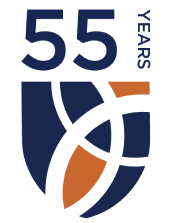False Claims Act Violations Regarding Controlled Substances, Prescriptions and Pill Mills
Controlled Substances & The Controlled Substances Act
Section 812 of the Controlled Substances Act ( 21 U.S.C. §801 et seq.f) (“CSA”) lists substances which were controlled in 1970 when the law was enacted. Since then, approximately 160 substances have been added, removed, or transferred from one schedule to another. The current official list of controlled substances can be found in section 1308 of the most recent issue of Title 21 Code of Federal Regulations (21 CFR §1308).
Click here for background on Healthcare, Pharmaceutical and Medical Device Fraud relating to filing False Claims actions.
The drugs and other substances that are considered controlled substances under the CSA are divided into five schedules. A listing of the substances and their schedules is found in the Drug Enforcement Agency (“DEA”) regulations, 21 C.F.R. Sections 1308.11 through 1308.15. A controlled substance is placed in its respective schedule based on whether it has a currently accepted medical use in treatment in the United States and its relative abuse potential and likelihood of causing dependence. Some examples of controlled substances in each schedule are outlined below:
- Schedule I — Substances in this schedule have a high potential for abuse, have no currently accepted medical use in treatment in the United States, and there is a lack of accepted safety for use of the drug or other substance under medical supervision. Some examples of substances listed in schedule I are: heroin, lysergic acid diethylamide (LSD), marijuana (cannabis), peyote, methaqualone, and 3,4-methylenedioxymethamphetamine (“ecstasy”). Because drugs listed in schedule I have no currently accepted medical use in treatment in the United States, they may not be prescribed, administered, or dispensed for medical use. In contrast, drugs listed in schedules II-V have some accepted medical use and may be prescribed, administered, or dispensed for medical use.
- Schedule II — Substances in this schedule have a high potential for abuse which may lead to severe psychological or physical dependence. Examples of single entity schedule II narcotics include morphine and opium. Other schedule II narcotic substances and their common name brand products include: hydromorphone (Dilaudid®), methadone (Dolophine®), meperidine (Demerol®), oxycodone (OxyContin®), and fentanyl (Sublimaze® or Duragesic®). Examples of schedule II stimulants include: amphetamine (Dexedrine®, Adderall®), methamphetamine (Desoxyn®), and methylphenidate (Ritalin®). Other schedule II substances include: cocaine, amobarbital, glutethimide, and pentobarbital.
- Schedule III — Substances in this schedule have a potential for abuse less than substances in schedules I or II and abuse may lead to moderate or low physical dependence or high psychological dependence. Examples of schedule III narcotics include combination products containing less than 15 milligrams of hydrocodone per dosage unit (Vicodin®, Lortab®) and products containing not more than 90 milligrams of codeine per dosage unit (Tylenol with codeine®). Also included are buprenorphine products (Suboxone® and Subutex®) used to treat opioid addiction. Examples of schedule III nonnarcotics include benzphetamine (Didrex®), phendimetrazine, ketamine, and anabolic steroids such as oxandrolone (Oxandrin®).
- Schedule IV – Substances in this schedule have a low potential for abuse relative to substances in schedule III. An example of a schedule IV narcotic is propoxyphene (Darvon® and Darvocet-N 1 00®). Other schedule IV substances include: alprazolam (Xanax®), clonazepam (Klonopin®), clorazepate (Tranxene®), diazepam (Valium®), lorazepam (Ativan®), midazolam (Versed®), temazepam (Restoril®), and triazolam (Halcion®).
- Schedule V — Substances in this schedule have a low potential for abuse relative to substances listed in schedule IV and consist primarily of preparations containing limited quantities of certain narcotics. These are generally used for antitussive, antidiarrheal, and analgesic purposes. Examples include cough preparations containing not more than 200 milligrams of codeine per 100 milliliters or per 100 grams (Robitussin AC® and Phenergan with Codeine®).
In addition to listing the schedules of controlled substances, the Controlled Substances Act and corresponding regulations govern the prescription of controlled substances. Under 21 CFR § 1306.04(a):
A prescription for a controlled substance to be effective must be issued for a legitimate medical purpose by an individual practitioner acting in the usual course of his professional practice. The responsibility for the proper prescribing and dispensing of controlled substances is upon the prescribing practitioner, but a corresponding responsibility rests with the pharmacist who fills the prescription. An order purporting to be a prescription issued not in the usual course of professional treatment or in legitimate and authorized research is not a prescription within the meaning and intent of section 309 of the Act (21 U.S.C. 829) and the person knowingly filling such a purported prescription, as well as the person issuing it, shall be subject to the penalties provided for violations of the provisions of law relating to controlled substances.
The Controlled Substances Act and corresponding regulations also impose several other, more specific, requirements for a prescription for controlled substances. First, all prescriptions for controlled substances must be dated and signed on the date when issued. [i] The prescription must include full name and address of both the patient and prescribing practitioner as well as the practitioner’s DEA registration number. [ii] The prescription must also include the drug name, strength, dosage form, quantity prescribed, directions for use, and number of refills (if any) authorized. [iii] A prescription for a controlled substance must be written in ink or indelible pencil or typewritten and must be manually signed by the practitioner on the date when issued. [iv] An individual (secretary or nurse) may, however, be designated by the practitioner to prepare prescriptions for the practitioner’s signature. [v]
Moreover, the DEA has limited who can prescribe controlled substances to only those physicians, dentists, podiatrists, veterinarians, mid-level practitioners, or other registered practitioners who are authorized to prescribe controlled substances in their own jurisdiction and are registered with the DEA. [vi]
Additionally, Schedule II Substances have more stringent restrictions. While there is no time limit on which a prescription for schedule II substance must be filled after the prescription is written, the prescription must be signed by a practitioner, cannot include any refills, [vii] cannot be called in, and if faxed in to the pharmacy cannot be filled by the pharmacist unless the original prescription is shown to the pharmacist. [viii] Finally,
[A]n individual practitioner may [only] issue multiple prescriptions authorizing the patient to receive a total of up to a 90-day supply of a schedule II controlled substance provided the following conditions are met:
-
Each separate prescription is issued for a legitimate medical purpose by an individual practitioner acting in the usual course of professional practice.
-
The individual practitioner provides written instructions on each prescription (other than the first prescription, if the prescribing practitioner intends for that prescription to be filled immediately) indicating the earliest date on which a pharmacy may fill each prescription.
-
The individual practitioner concludes that providing the patient with multiple prescriptions in this manner does not create an undue risk of diversion or abuse.
-
The issuance of multiple prescriptions is permissible under applicable state laws.
-
The individual practitioner complies fully with all other applicable requirements under the Controlled Substances Act and Code of Federal Regulations, as well as any additional requirements under state law.
DEA Practitioner’s Manual § V. In contrast, prescriptions for schedule III-V substances may be refilled up to 5 times within the six months of the prescription’s issue and may be transmitted to the pharmacist by phone or fax. [ix]
Prescribing Controlled Substances and the False Claims Act
Prescribing controlled substances can form the basis for a violation of the Federal False Claims Act in two ways. First, Medicare, Medicaid and other federal healthcare programs only reimburse for medically necessary prescriptions. [x] Prescriptions are not covered if they are “not reasonable and necessary for the diagnoses or treatment of illness or injury or to improve the functioning of a malformed body member[.]” [xi] Submitting a claim to a federal healthcare program for prescriptions that are not reasonable and necessary for the treatment of an illness or injury constitutes a false claim, subject to False Claims Act Liability. Similarly, submitting a claim for a visit that is for the purpose of providing prescriptions and not for a reason that is reasonable and necessary would also constitute a false claim.
Second, a doctor prescribing controlled substances in violation of the Controlled Substances Act and submitting a claim for those drugs or the visits in which they prescribed the drugs would also be submitting a false claim. Medicare enrollment applications and Medicaid agreements include certifications to abide by all applicable laws and regulations in order to receive payment from the programs. By violating the Controlled Substances Act, and thus violating the law, the prescribing doctor is not abiding by the certification they made to be paid by the Federal Healthcare Programs and the claim is therefore false.
Contact Us To Learn More
If you have discovered evidence of government fraud, contact an experienced False Claims Act attorney before blowing the whistle. You may be entitled to a substantial reward and the legal protections afforded to whistleblowers under state and federal laws. The attorneys of Berger Montague are nationally recognized experts in Whistleblower/Qui Tam actions with over a decade of experience pursuing these complex fraud cases. For more information or to schedule your confidential consultation, call us at (844) 781-3088.
[i] DEA Practitioners Manual, § V.
[ii] Id.
[iii] Id.
[iv] Id.
[v] Id.
[vi] Unless they are part of the Public Health Service, Federal Bureau of Prisons, or military practitioners who are exempted from registration or are “an agent or employee of a hospital or other institution acting in the normal course of business or employment under the registration of the hospital or other institution which is registered.”
[vii] 21 U.S.C. § 829(a).
[viii] In an emergency a schedule II drug may be called in to a pharmacist. See DEA Practitioners Manual, § V, supra n.1.
[ix] DEA Practitioners Manual, § V, supra n.1.
[x] 42 U.S.C. § 1395y(a)(1)(A). TRICARE Policy Manual, 6010.54-M Chap. 11 Sect. 12.1(II)(C)(7) (TRICARE does not cover services if the provider does not meet the Medicare conditions of participation or conditions of coverage for substantially comparable services).
[xi] Id.











